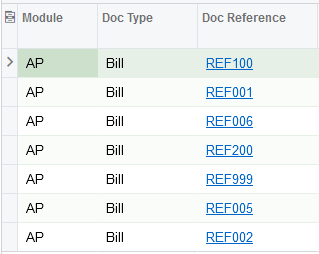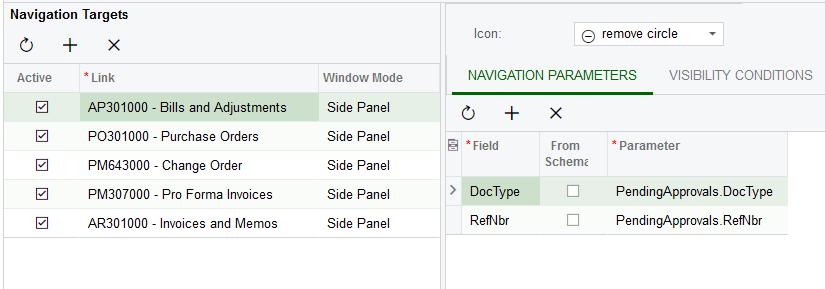Hello Everyone.
I have created a GI that dpending on selected “Module” should navigate to the source document in my side panels. For example “AP” should navigate to “Bills & Adjustments”. Here is partial data from my result grid

I know my keys are DocType and RefNbr. So here is how I have set up my Navigation Parameters and Visibility Conditions


I have two problems.
- When I click on the hyperlink or record it doesn’t show the related document in the side panel.
- In my GI the navigation Icon is always invisible with this condition. If I deactivate the condition then it becomes visible
What I am doing wrong?



